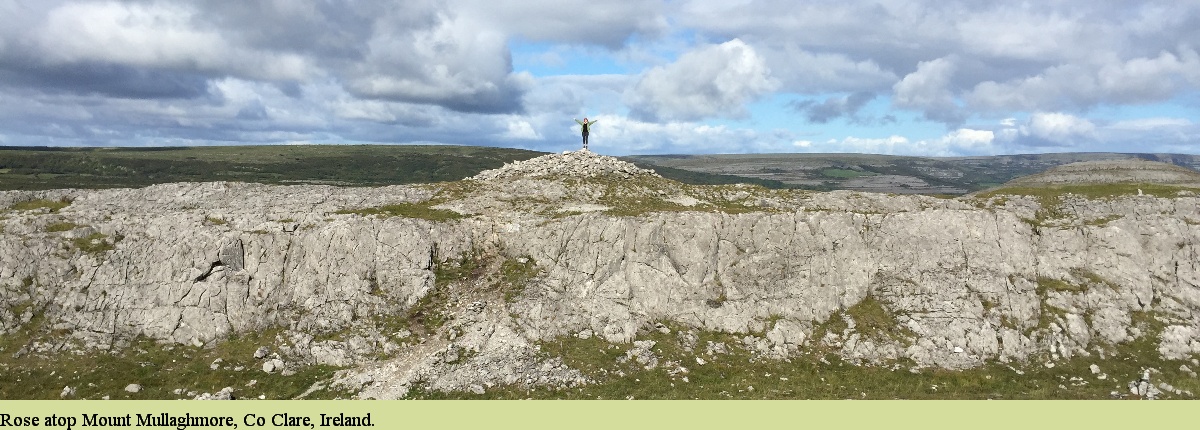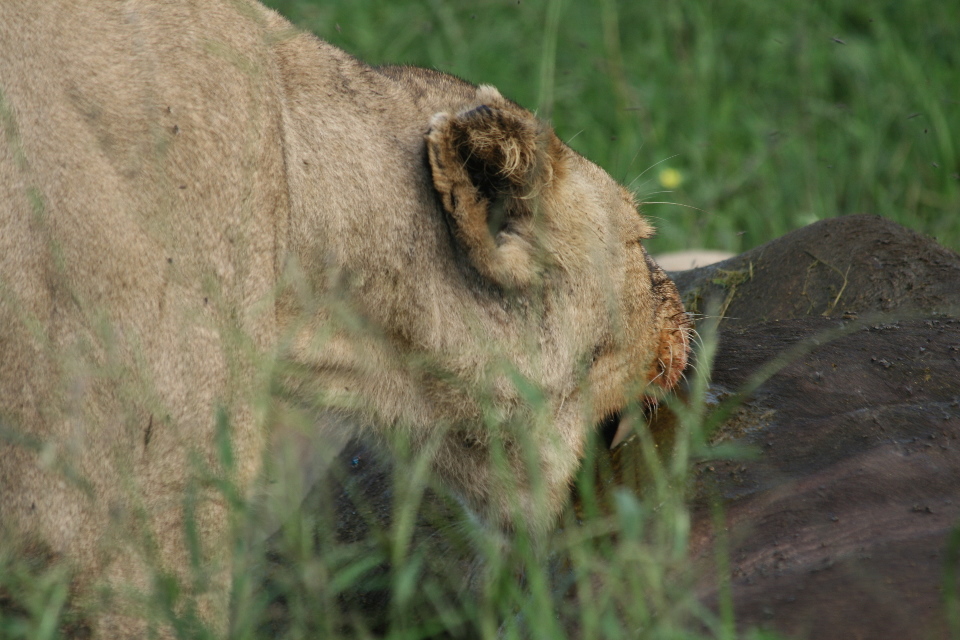Early morning start today, out the gates 15 minutes after they opened at 5:30 am. Tossed a coin and picked dirt S100 that runs out north east from Satara camp where we stayed for 3 nights.
30 minutes into the drive Rose says: “Looks like cars up ahead”. Sure enough 5 or 6 are clustered and all eyes were on the left. We got lucky as a group of lions had killed a Wildebeest right next to the road although it was hidden by the long grass and other cars.
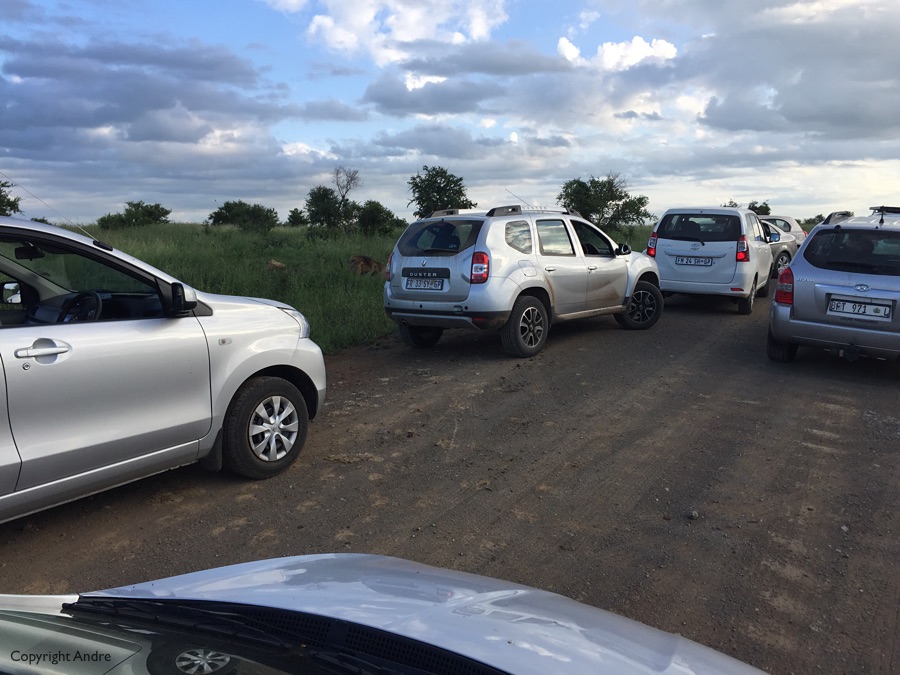
We idle forward in the second lane, find a view and kill the motor. Now everyone watches and waits.
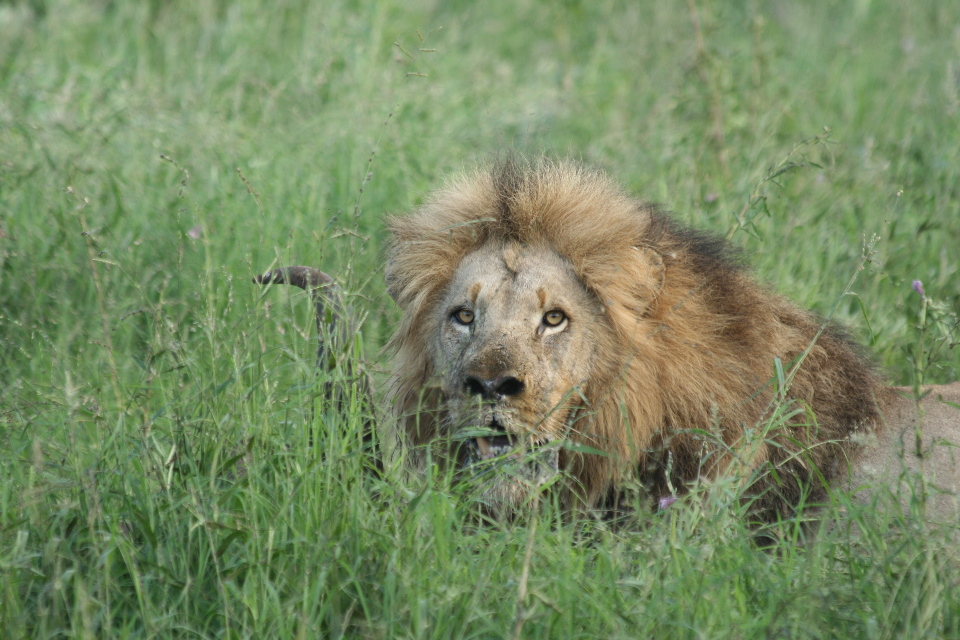
Two large males are eating, the one above on the beasts snout as you can see it’s horns sticking up. He is not so much as looking at us but rather seemed a bit exhausted and was taking a rest from chewing on the carcass.
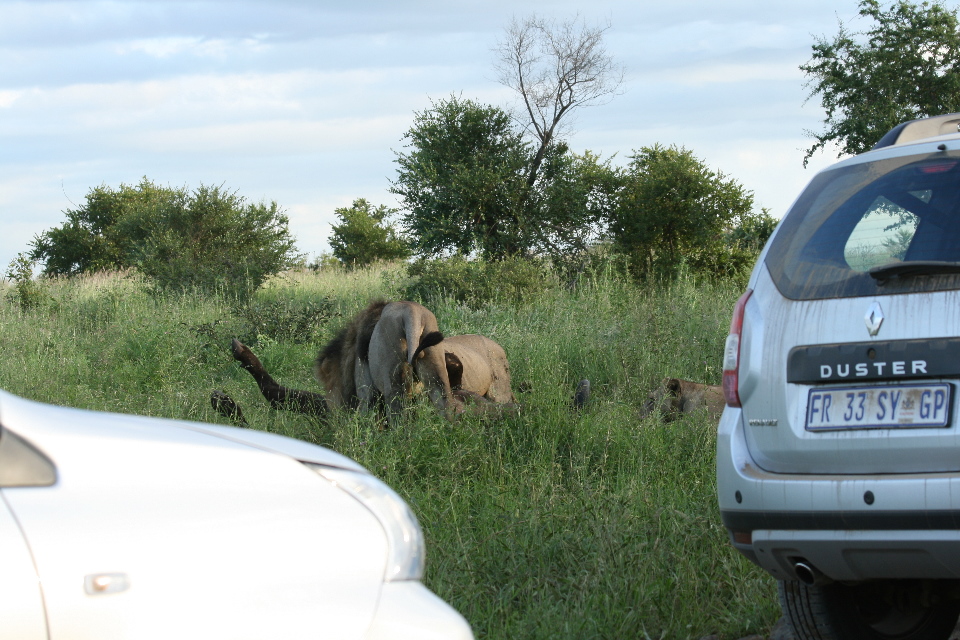
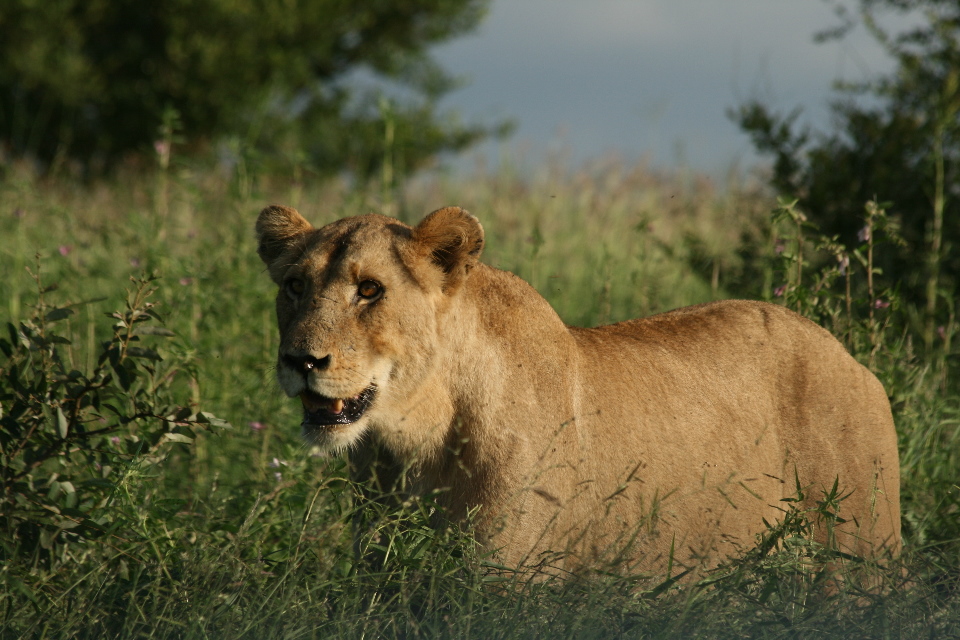
The two males then sidle over the the shade of a tree and sprawl themselves down, almost obivious to the world.
Tearing flesh.
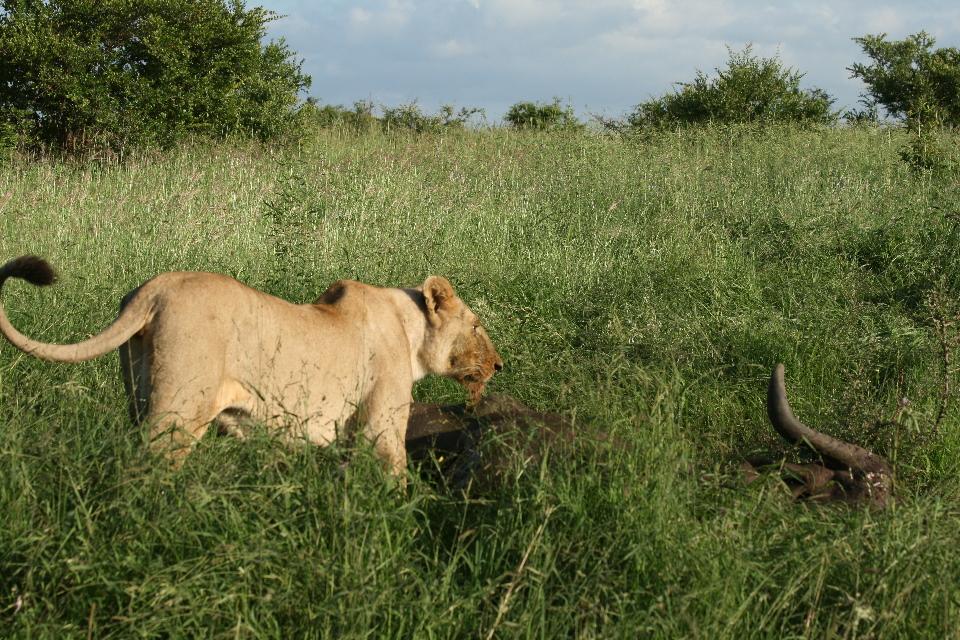
The females tuck in with very violent jaws and snarling when one starts to eat too close to the other. We watch and change position each time a car leaves and frees up viewing space. After 40 odd minutes we move on satisfied to have finally seen a big cat and to have seen them at a kill.
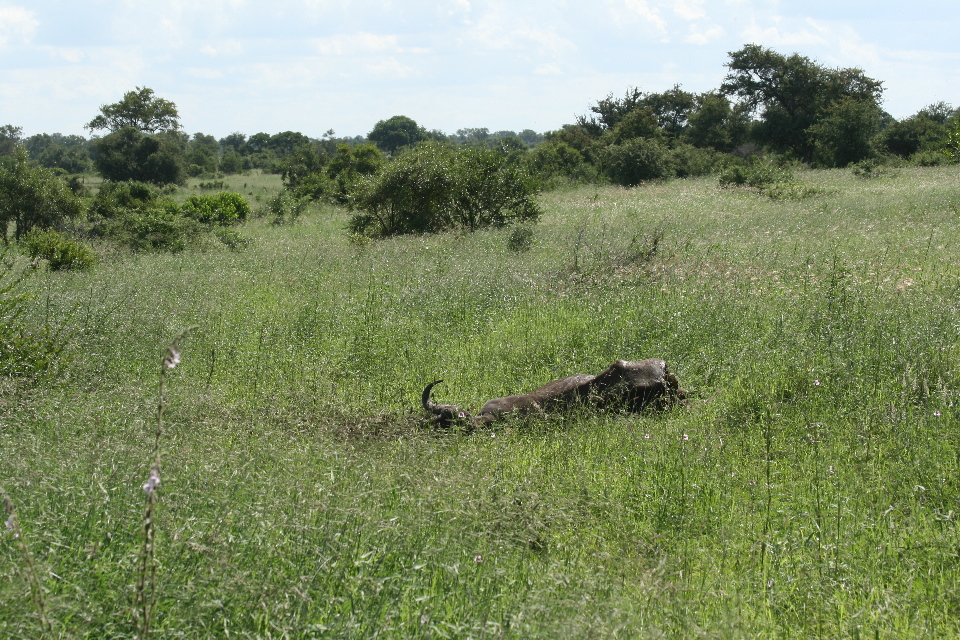
Later that afternoon around 3 pm we swing by to see whats happening. The carcass lies in the hot sun, Lions are sleeping in the shade of the trees and hordes of vultures patiently wait in the trees.
We leave again and make a third visit the next day at 10 am. Nothing, nada. I couldn’t believe it. I expected the lions to have left and that the vultures would be scrapping over the remains. Our camp neighbors said that the lions were still there at 8 am so I can only surmise that they were able to drag the carcass off somewhere to be more easily guarded for further eating.
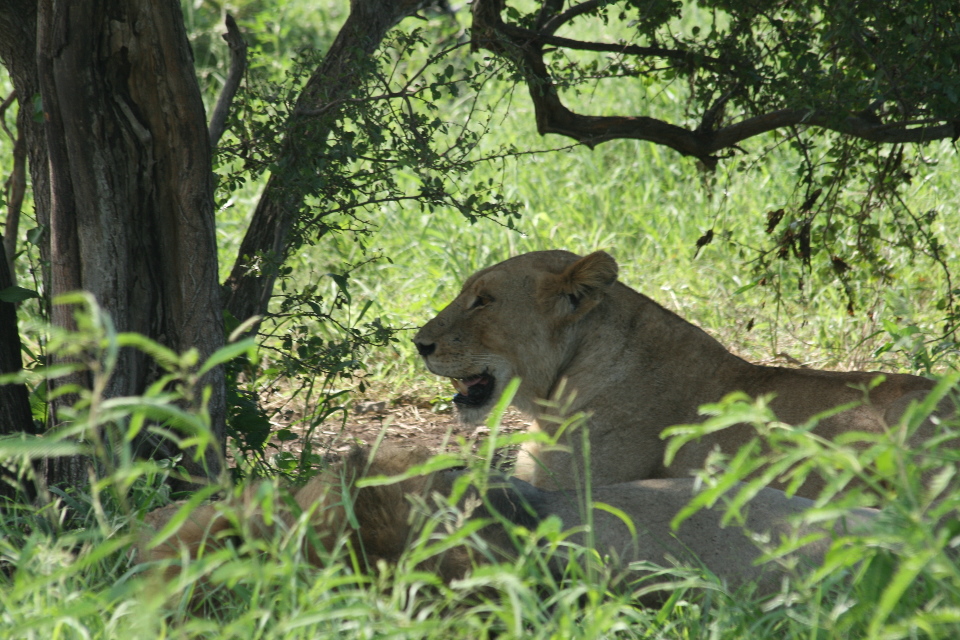
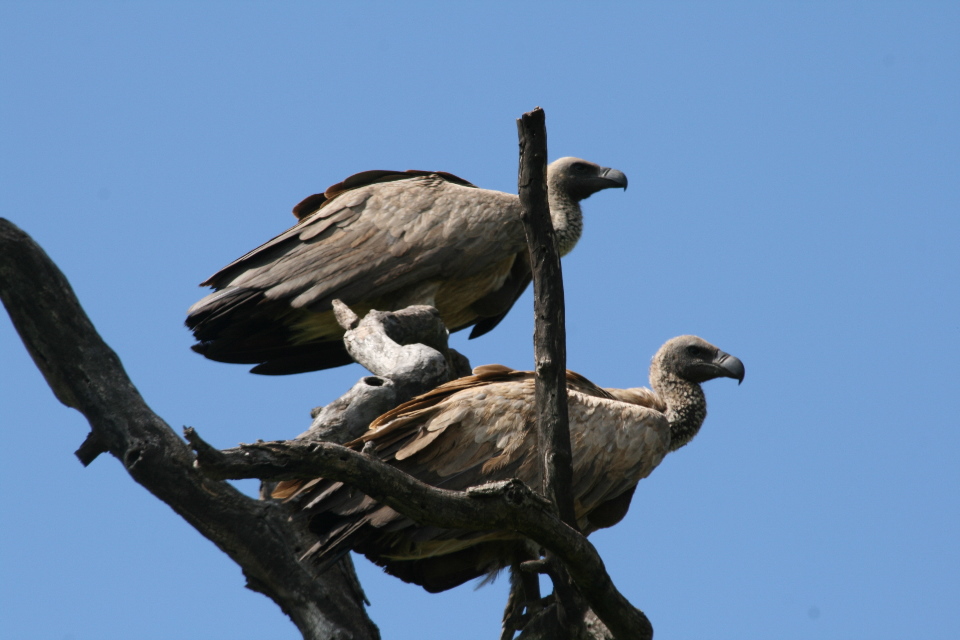
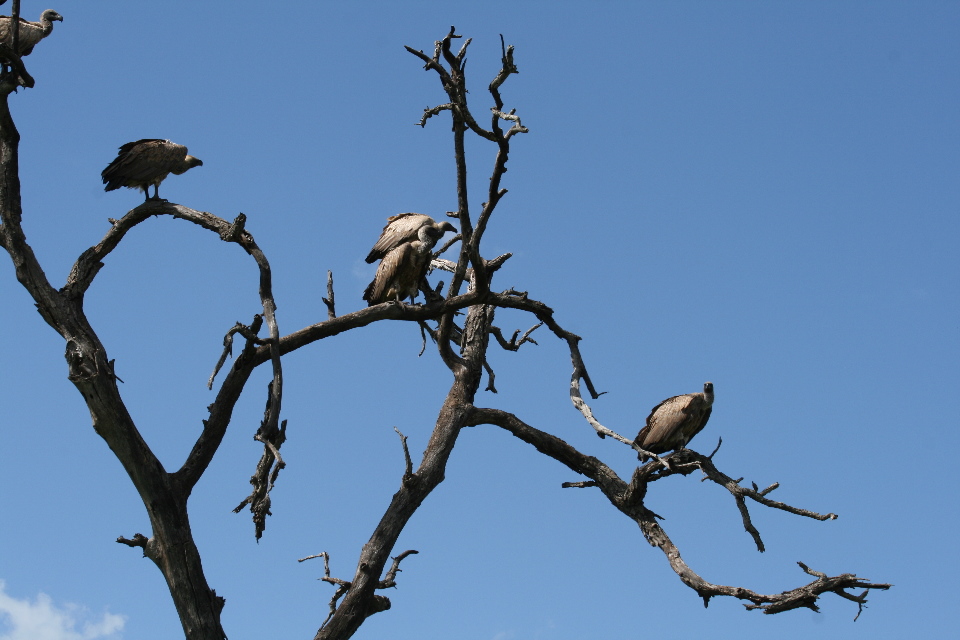

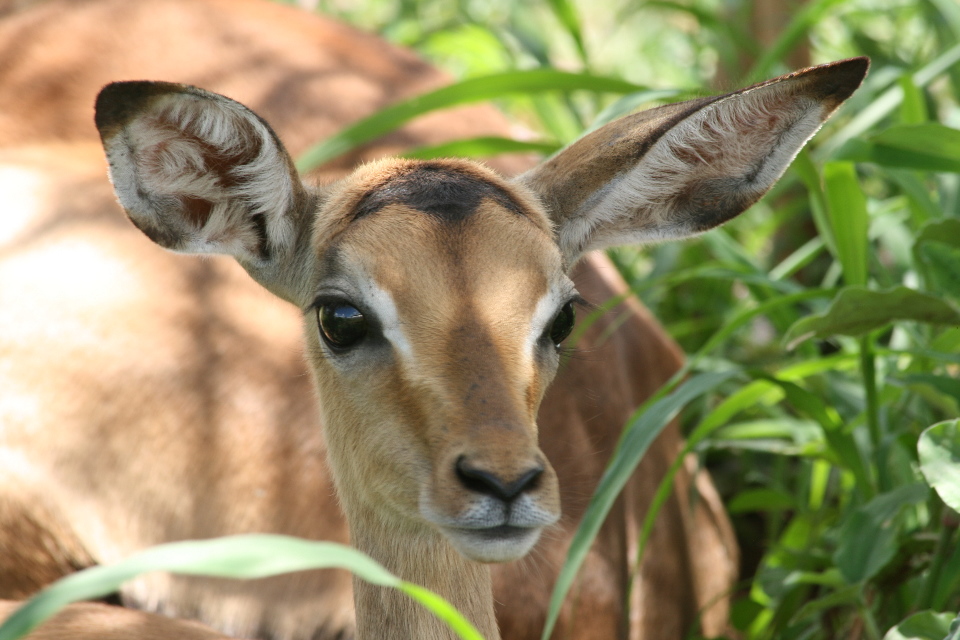
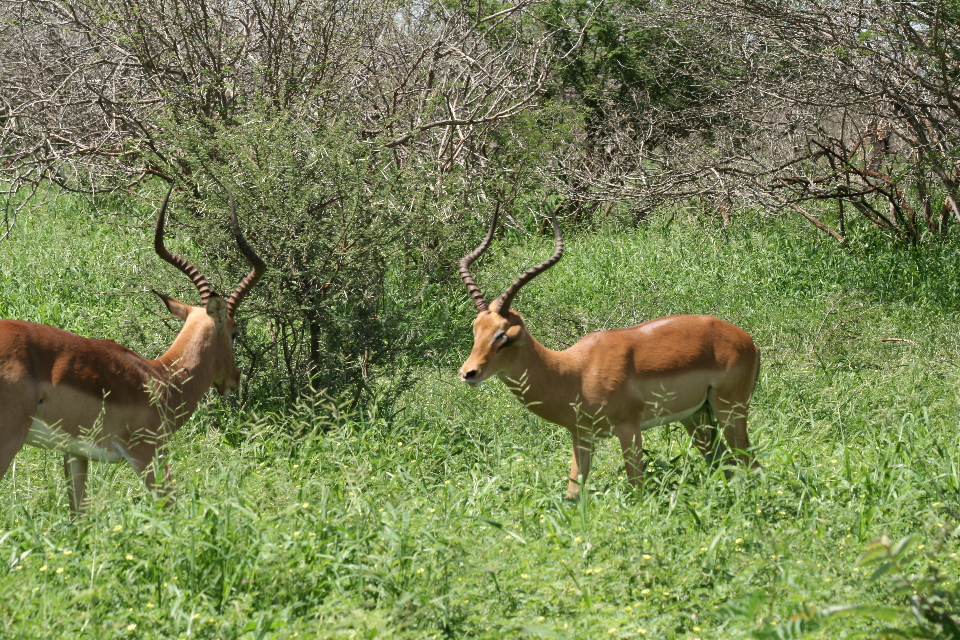
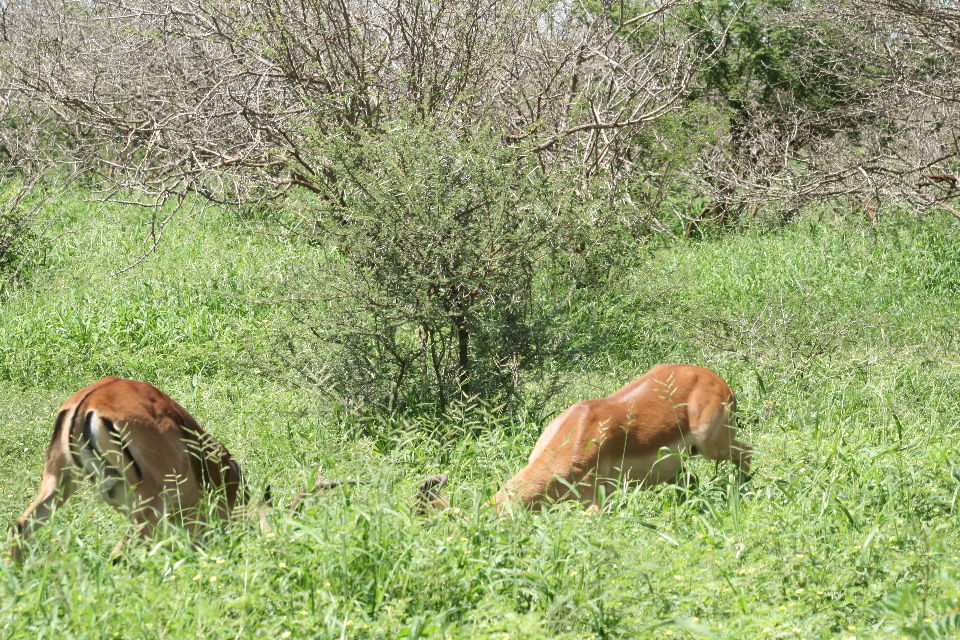
Tried to catch these two butting horns but each time I see them come together and press the shutter their heads are already down in the grass.
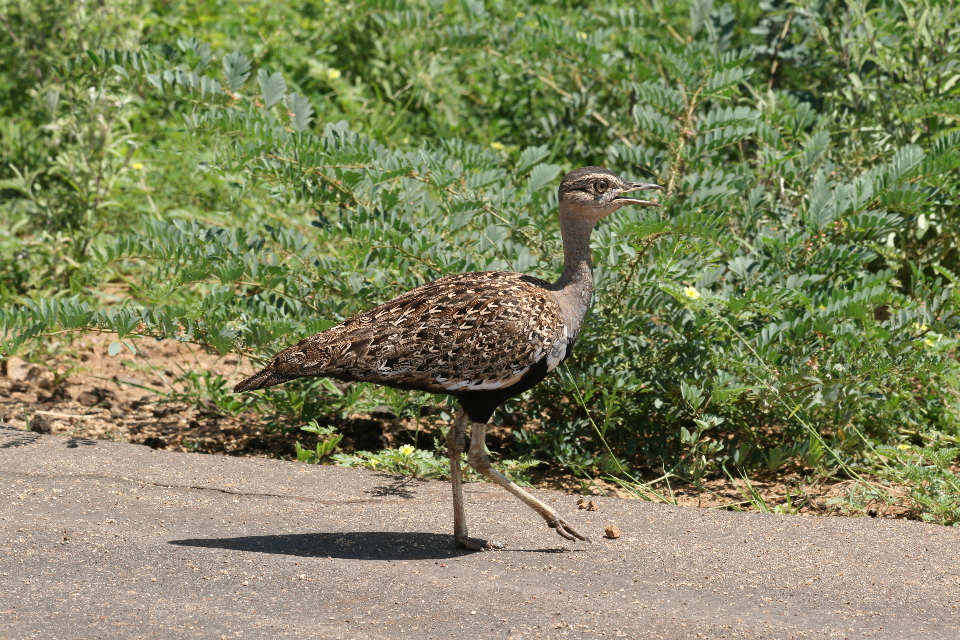
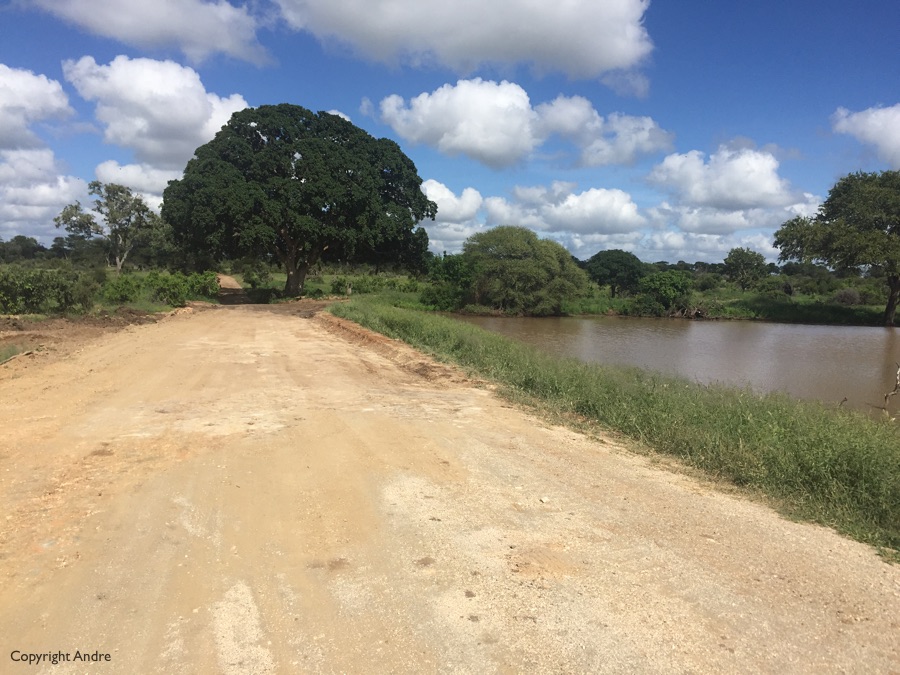
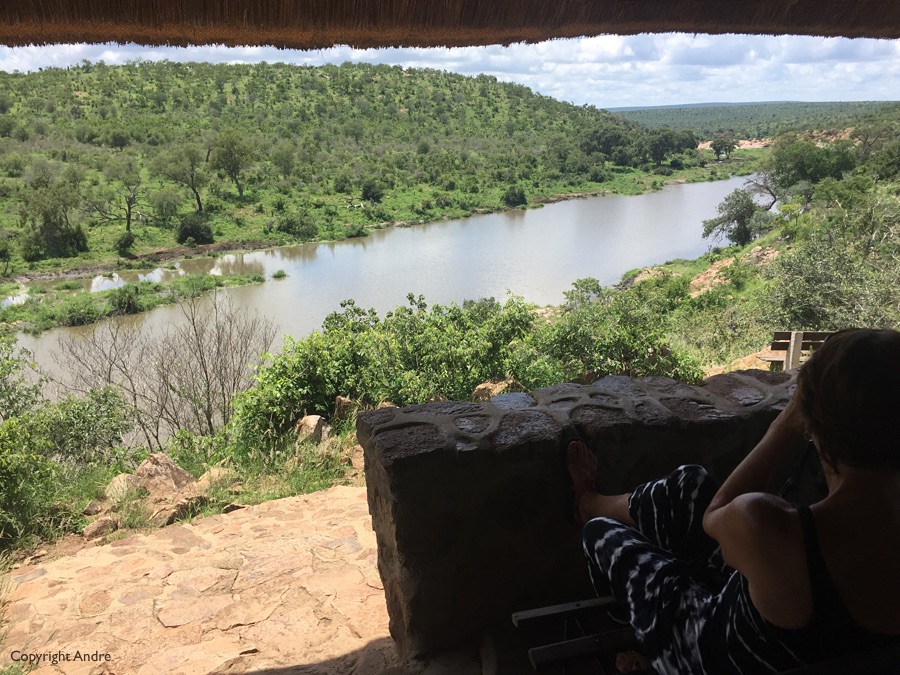
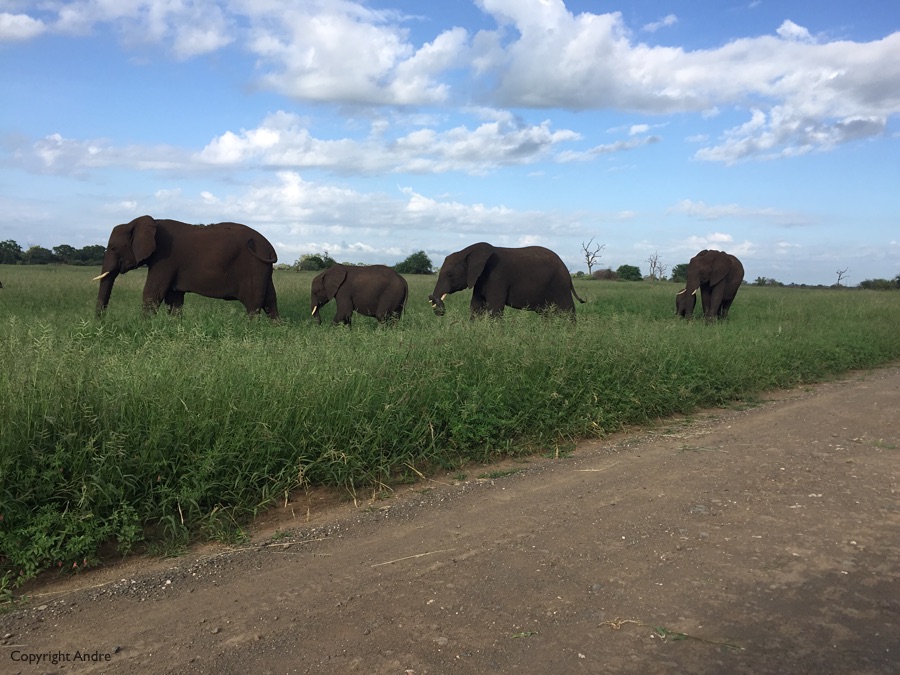
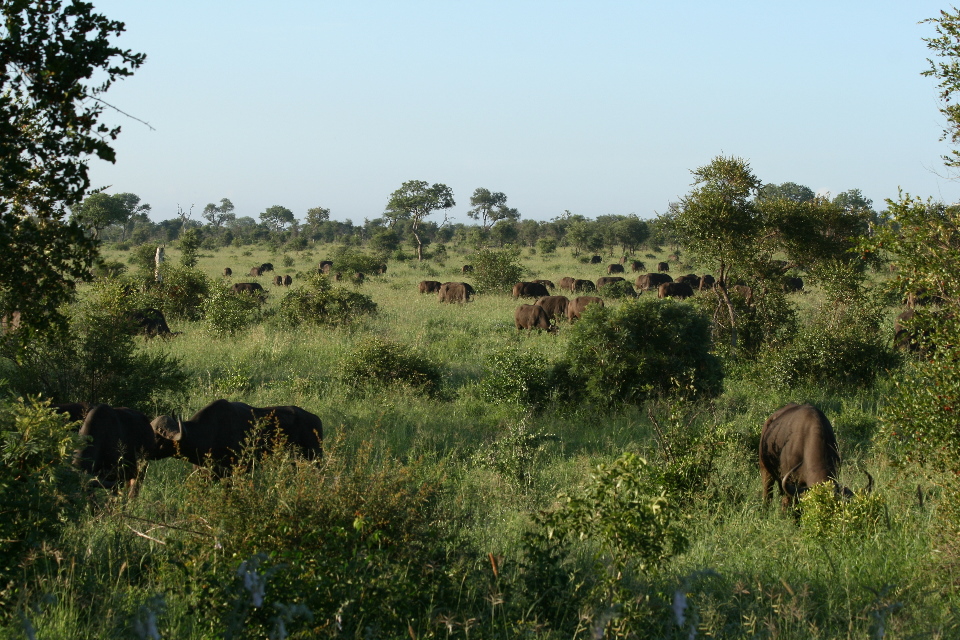
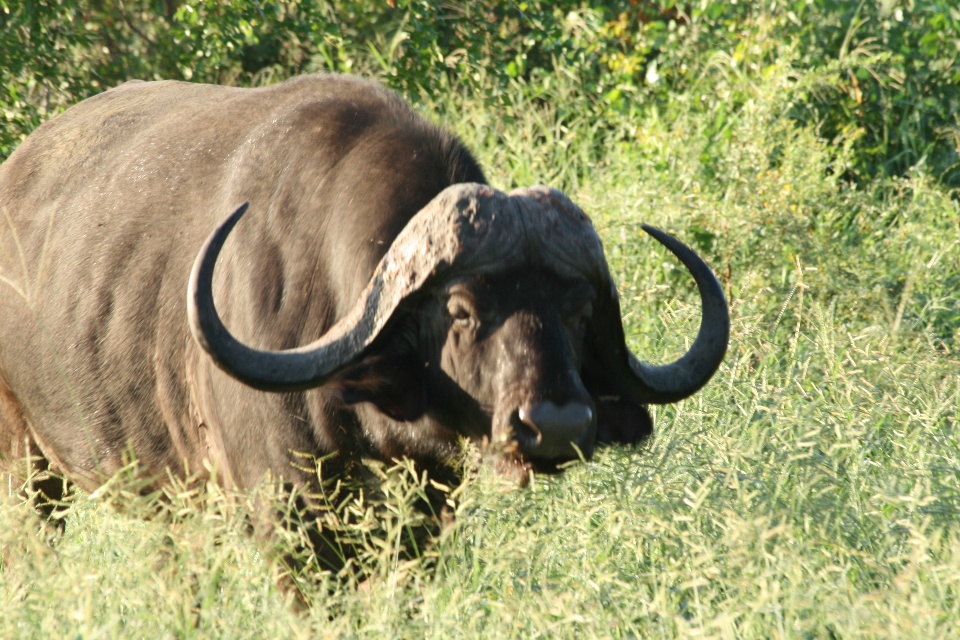

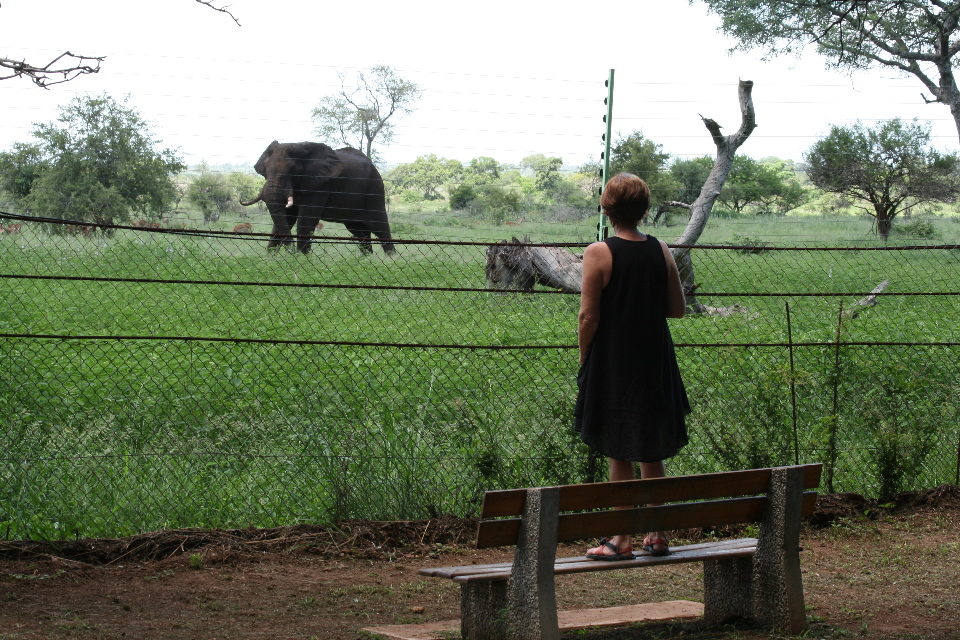
We have a “perimeter” rondavel which is nice as we can view through the fence. Plenty of Zebra & Wildebeest and one lone elephant content to graze near the camp.
